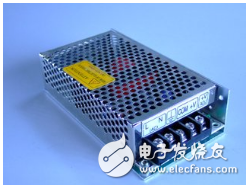Looking for a power supply that can convert power from AC or DC to one or more DC levels? Then you need a switch mode power supply. Here's how it works. Often referred to as "switches," these devices turn their power on and off several times per second. This switching operation produces an effective input frequency and typically reaches the megahertz range. 1 What is the "switch mode"? The "switch" in a switching power supply is actually a semiconductor (a MOSFET that is either turned off or turned on) that is driven into a saturation range to convert power at almost zero resistance. It does thousands of such conversions per second, producing high frequency AC media. Since the semiconductor has been driven into saturation, it has almost no resistance, achieving high efficiency and minimal heat generation. On the other hand, there is also a linear power supply, which is named because its rectifier operates in a linear range. This means that when they conduct power, resist resistance conduction, which is accompanied by power waste and heat generation. Regardless of the frequency at which the semiconductor is switched, the time between two "on" pulse start intervals is defined as the switching period. The "on" time accounts for a small portion of the switching cycle and is called the duty cycle. The output voltage can be controlled by changing the duty cycle. Changing the duty cycle on the "fly" maintains the target voltage. What are the advantages of switching power supplies (SMPS)? High efficiency – produces little heat. Low-power components typically do not require a heat shield, which means they can be mounted directly on the PCB. Compact form factor – Since the transfer switch operates at higher frequencies, its value and size associated with the filter capacitor and inductor will be reduced and the entire component will take up less space. Versatile design – Depending on the application, the transfer switch can be designed for boost or buck. 2 Switch mode power supply design the term The term "full brick, half brick, and quarter brick" is often used to describe a transfer switch. The full brick size is 4.6 x 2.4 x 0.5, the half brick is 2.3 x 2.4 x 0.35, and the quarter brick is 2.3 x 1.45 x 0.35, both in inches. Although these definitions are widely accepted, they are not consistently observed. The specification also includes pins. So when using a standard-compliant switch, it's easy to do if the designer needs or chooses to replace the product. The updated model's quarter brick power supply provides 250 watts and higher electrical power. This is a big step forward compared to the amount of space required for power before, and the free space can be used to include more features in the product design. Construct The equation describing the physics of transfer switches seems simple. Dealing with amps (as opposed to most electrical engineers typically dealing with microamps) can lead to delays, increased costs, and even complete product failure. Therefore, the design of the transfer switch is best left to the power supply experts to do, that is, in this case, the purchase is always stronger than the construction. Engineers have two main options when designing switching power supplies. The first is a single power supply that generates all the voltages needed for the system that needs to be powered. The second involves a component that is connected to an external AC, but has only one DC output, typically 12, 24, or 48 volts. In this case, the main power source generates the highest voltage, which is the required voltage. If a lower voltage is needed somewhere in the system, the buck converter can be used to perform the required DC to DC down conversion. The buck converter is extremely efficient, with a power loss of only 5% or even lower. They are also sometimes described as switching regulators. A buck converter is similar in some sense to all transfer switches, centered on a semiconductor switch that switches the source voltage thousands of times or more. Due to its design advantages, switching power supplies have quickly become the standard for all applications except the most rigorous technical applications. Design work has been moving toward more efficient, small, and lightweight. Optical Rotary Sensor,Custom Encoder,Optical Encoder 6Mm Shaft,Handwheel Pulse Generator Jilin Lander Intelligent Technology Co., Ltd , https://www.jilinlandermotor.com